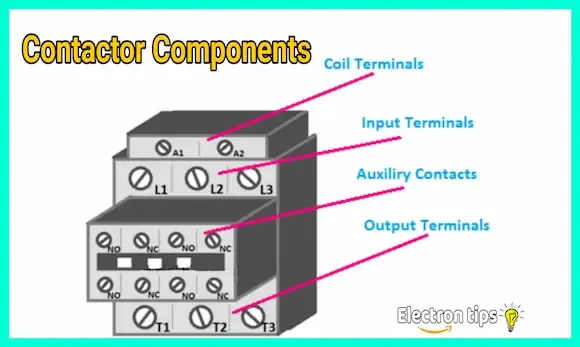 |
| Contactor |
What is Contactor and how it's Works
Welcome, visitors and followers of the Electron Tips blog. In today's topic, we will learn about the most important element in electricity, especially the automatic control electricity, which is the Contactor, so what is the Contactor? And how does the contactor work? And what are the components of the contactor ?
Contactor definition
Each type of operation has advantages, but it is widely used according to the type of electric motor, and the purpose for which it was designed, but this is not our topic today, as we will limit ourselves in this topic to getting to know what is the definition of a contactor, its working principle, as well as its internal structure, and In another topic, we will explain the types of operating systems for single and three-phase electric motors, and what is the benefit of each of them.
Contactor Symbol :
This is the Contactor Symbol :
 |
| Contactor Symbol |
Contactor components :
 |
| Contactor points |
In general, the work of the contactor is similar to the way the relay complex works, but the contactor is mostly available at three main entrances and exits, and this is numbered, respectively, with: 1.3.5 for the entrances and 2.4.6 for the exits, in addition to another outlet called the auxiliary contact point. It is used for control, and we have the option to install separately from the contactor, and it is recorded on the auxiliary points of the contacore (13,14), and is often open in the normal state ON. And also closed points written on it (11,12), in addition to To the fixed iron mold, and another moving end that allows the contact of the contactor at the moment his file is lunched, and he returns to his place when the feeding is separated by a pulsating action.
The working principle of the contactor
The internal structure of the contactor :
 |
| Contactor Structure |
compound This image shows all the components and structure of the contact element, which is the basis for the operation and control of electric motors and pumps. 110V, 220V, 380V.
Conclusion :
In the end, this was a simple explanation of the components and the working principle of the contactor device, in addition to illustrative pictures of this electrical compound. If you have any questions or inquiries about this topic or something else related to this field, you can ask it in the comments section or on our Facebook page Electrical Engineering Tips.
